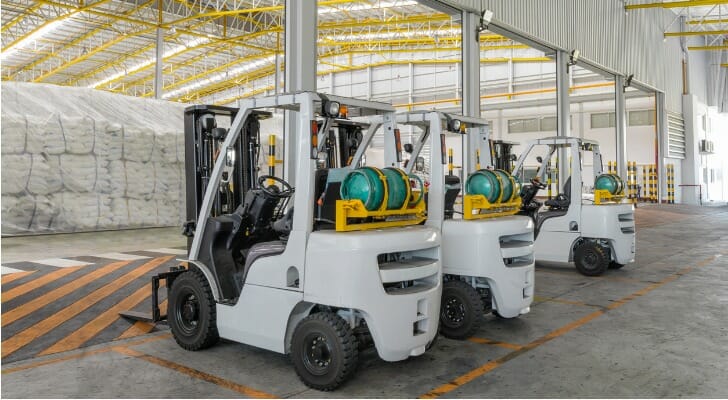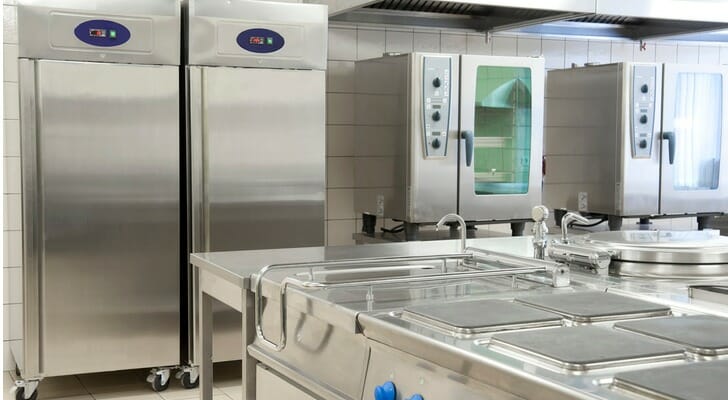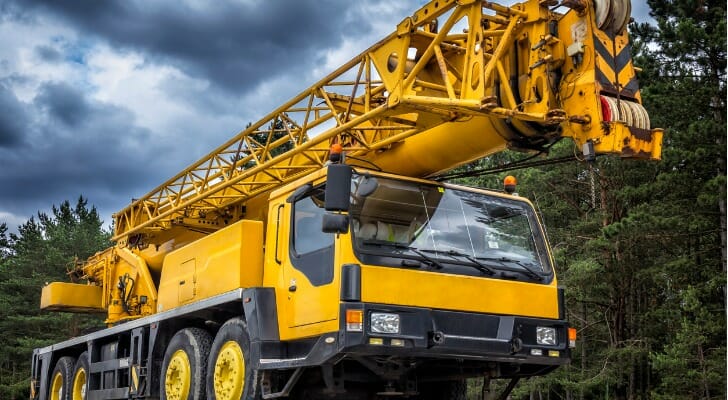 Financing the purchase of essential equipment lets businesses preserve cash for working capital, hiring staff, expanding marketing efforts or other purposes. Equipment financing can be done with term loans, SBA-backed loans, lines of credit and credit cards. Equipment loans are generally easier to get than other forms of financing and may require no down payment, since the loan will be secured by the equipment being purchased. If you’re not sure which option to take, consider talking to a financial advisor experienced in this area.
Financing the purchase of essential equipment lets businesses preserve cash for working capital, hiring staff, expanding marketing efforts or other purposes. Equipment financing can be done with term loans, SBA-backed loans, lines of credit and credit cards. Equipment loans are generally easier to get than other forms of financing and may require no down payment, since the loan will be secured by the equipment being purchased. If you’re not sure which option to take, consider talking to a financial advisor experienced in this area.
Many sorts of businesses use financing to acquire a variety of equipment types. Construction companies finance the purchase of bulldozers and cranes, restaurants finance refrigerators and ovens, fitness centers finance workout machines and computers to run their offices, to name a few.
Loans may be any amount up to the value of the equipment, with 100% loan-to-value financing, although 20% down payments could be required. Interest rates range from under 5% to more than 30%, with repayment terms extending 10 years or more, up to the useful life of the equipment. Approval for an equipment financing request often depends on the business credit score, size of the down payment and the existence of a business plan documenting cash flow projections adequate to repay the borrowed sum
Types of Equipment Financing
Businesses obtain equipment financing from a number of sources, including traditional banks large and small, online lenders, SBA-affiliated lenders and credit cards.
Term loans. Local and national banks and online lenders make equipment loans of one to 10 years in length for up to 100% of the equipment value, at interest rates ranging from 4% to 25%. Banks favor loans to established businesses with good credit scores and well-documented repayment plans. Online lenders have more flexible guidelines but also may charge higher rates and fees.
Small Business Administration 504 loans. These government-guaranteed loans are made by nonprofit Certified Development Company (CDC) lenders certified by the SBA. Known as 504 loans, they can only be for up to 40% of the cost of acquiring fixed assets, and require 10% down by the borrower, with a private lender providing the remaining 40%.
Lines of credit. Revolving lines of credit arranged through banks or online lenders can be set up in advance and used to purchase equipment as needed. Borrowers only pay for funds they have actually borrowed through the line of credit, and monthly payments may vary with changes in the balance owed. Lines of credit usually don’t require collateral or down payments but have higher interest rates than loans.
Credit cards. Business credit cards are easy to get as long as a business has a good credit score and some operating history. The application process is simple and funds are available immediately upon approval. Some other loans may take days or weeks before funding. However, the amount that can be tapped with a credit card is limited and rates and fees are higher than alternatives.
Equipment Leasing
 Businesses that lack the credit score, operating history or down payment needed to qualify for a loan or other purchase financing can acquire equipment by leasing it. Leasing requires no down payment and approval is much easier to get than when requesting a loan. Monthly lease payments may be less than a loan payment would be, freeing up additional cash. And when the lease term is up, the business can return the equipment without owing any more.
Businesses that lack the credit score, operating history or down payment needed to qualify for a loan or other purchase financing can acquire equipment by leasing it. Leasing requires no down payment and approval is much easier to get than when requesting a loan. Monthly lease payments may be less than a loan payment would be, freeing up additional cash. And when the lease term is up, the business can return the equipment without owing any more.
The downside of leasing is that it ultimately can cost more than buying. While monthly lease payments could be lower than loan payments, the total of lease payments may be more than the amount of all the loan payments. Also, while there is no down payment, the business won’t own the equipment at the end of the lease.
The Bottom Line
 Equipment financing gives businesses access to essential machinery, fixtures, furniture and other assets without the need to devote large sums of cash to outright purchase. Equipment loans are available from a variety of sources, including government-guaranteed loans, and are generally easier to get than other forms of financing. Be sure to avoid taking out equipment loans with terms that exceed the useful life of the asset. Otherwise, you risk being on the hook to make payments on a piece of equipment that has already been retired or scrapped. With this in mind, leasing may be a better option than buying for equipment that quickly becomes obsolete.
Equipment financing gives businesses access to essential machinery, fixtures, furniture and other assets without the need to devote large sums of cash to outright purchase. Equipment loans are available from a variety of sources, including government-guaranteed loans, and are generally easier to get than other forms of financing. Be sure to avoid taking out equipment loans with terms that exceed the useful life of the asset. Otherwise, you risk being on the hook to make payments on a piece of equipment that has already been retired or scrapped. With this in mind, leasing may be a better option than buying for equipment that quickly becomes obsolete.
Tips for Small Businesses
- Before signing a loan or arranging for another way to finance an equipment purchase, consider talking it over with an experienced financial advisor. If you don’t have a financial advisor yet, finding one doesn’t have to be hard. SmartAsset’s free tool matches you with up to three vetted financial advisors who serve your area, and you can interview your advisor matches at no cost to decide which one is right for you. If you’re ready to find an advisor who can help you achieve your financial goals, get started now.
- How you finance equipment can affect your taxes. Tax rules for independent contractors differ from what a traditional employee experiences, but they’re not overly complicated. Getting familiar with the basics can make filing your taxes as an independent contractor easier to navigate.
Photo credit: ©iStock.com/Weerasaksaeku, ©iStock.com/zaemiel, ©iStock.com/ewg3D